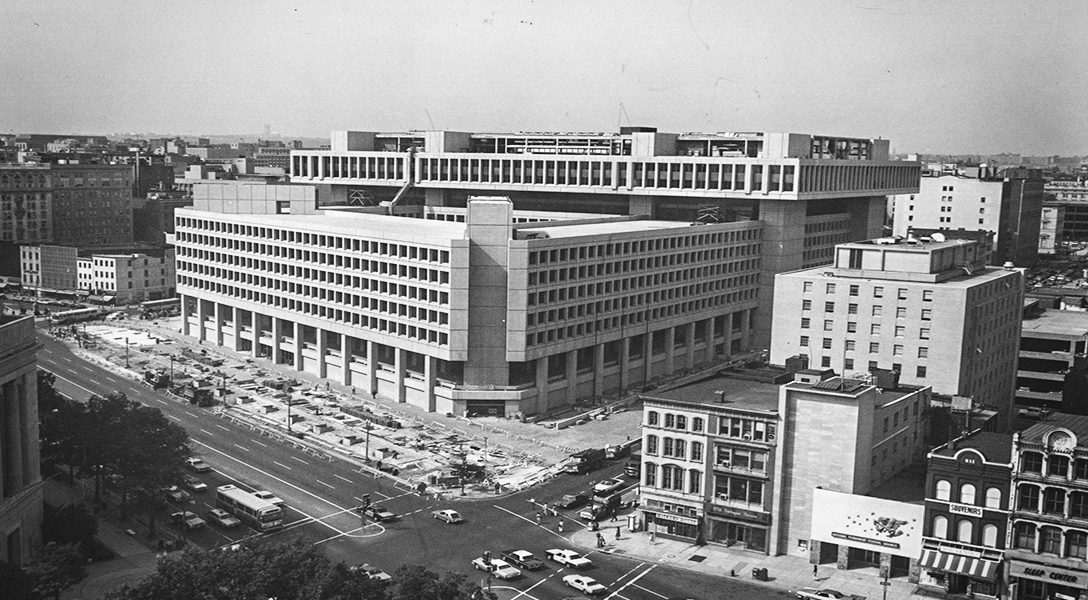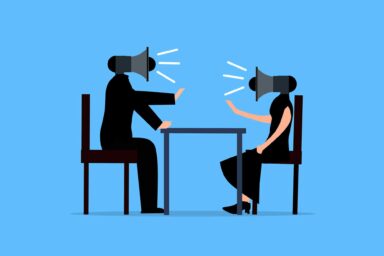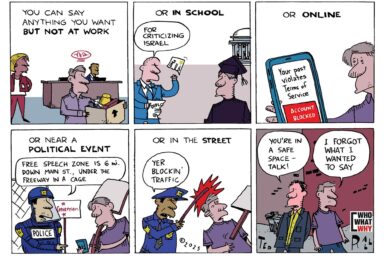Longtime Memphis journalist Marc Perrusquia has spent years examining the questionable tactics of the FBI in their surveillance of Martin Luther King and his Southern Christian Leadership Conference. This week’s podcast explores the Bureau’s behavior and reveals that — amazingly — these same shadowy tactics, and their cover-up, continue to this day.
Longtime Memphis journalist Marc Perrusquia spent years investigating the story of how a famous African American photographer, with remarkable access, played a key role in the civil rights movement, all while being an informant for the FBI.
Ernest Withers’s photography captured some of the most stunning moments of the civil rights era: including Dr. Martin Luther King, Jr. riding one of the first integrated buses in Montgomery, AL, and the blood flowing into King’s room from the balcony at the Lorraine Motel, where he was assassinated. Withers had a front row seat to history, as a man trusted and beloved by the movement’s inner circle. All the while he was reporting back to the FBI.
On this 50th anniversary of King’s assassination, Perrusquia talks to WhoWhatWhy’s Jeff Schechtman about Withers and the impact that his information had on both the civil rights movement and the Bureau.
Perrusquia speculates that Withers, who was also a disgraced cop, may have actually been a double agent, informing both the FBI and some of the people he trusted in the movement about what he believed was a noble effort that had gone too far. Withers’s conservative views made him critical of King’s anti-war stance and of the dangers that he saw posed by radicals inside the movement.
In addition to the story of Withers, the FBI, and the civil rights struggle, Perrusquia tells Schechtman about his own battles to get all of this information from the FBI, and how hard the Bureau fought to protect its informant.
Marc Perrusquia is the author of A Spy in Canaan: How the FBI Used a Famous Photographer to Infiltrate the Civil Rights Movement (Melville House, March 27, 2018).
Click HERE to Download Mp3
Full Text Transcript:
As a service to our readers, we provide transcripts with our podcasts. We try to ensure that these transcripts do not include errors. However, due to time constraints, we are not always able to proofread them as closely as we would like. Should you spot any errors, we’d be grateful if you would notify us.
| Jeff Schechtman: | Welcome to Radio WhoWhatWhy, I’m Jeff Schechtman. Controversy surrounding the FBI is nothing new. Its tentacles have often seemed to be everywhere. Its mission and motives not always pure. And its success often over-blown. And its many failures often under-reported. |
| We see it today in the murky FBI failures in fingerprints with respect to the Boston bombing. Its failures on 9/11. Ignored warnings on the recent Parkland shooting. And what we’re just starting to find out about its connections with respect to the Pulse nightclub and San Bernardino. So many secret FBI connections to so many disasters. | |
| Historically the story is the same. One such example is the FBI’s infiltration and spying on the Civil Rights movement. It’s a story with many players, but at the center of the lens is famed civil rights’ photographer, Ernest Withers. The story of Wither’s role in the Civil Rights movement and his connection to the FBI has come to the surface mostly because of the dogged determination and real journalism of my guest, Marc Perrusquia. | |
| Marc Perrusquia is a journalist for The Commercial Appeal. The daily newspaper in Memphis, Tennessee, where he’s worked for the past 29 years. He’s won numerous national awards for his writing and investigative reporting. And it is my pleasure to welcome Marc Perrusquia here to talk about his book, A Spy in Canaan: How the FBI Used a Famous Photographer to Infiltrate the Civil Rights Movement. | |
| Marc, thanks so much for joining us on Radio WhoWhatWhy. | |
| Marc Perrusquia : | Thank you for having me, Jeff. |
| Jeff Schechtman: | First of all, for those that don’t know. Talk a little bit about who Ernest Withers was. This famed photographer. |
| Marc Perrusquia : | Ernest Withers, although he’s not a household name, was a very famous photographer. He was a big photographer in the movement, the Civil Rights movement. He was born and raised in Memphis. He was a police officer briefly for the city of Memphis. He wound up getting caught up in a corruption scandal and got kicked off the force around 1951. And as it turns out, that was probably the best thing that ever happened to him because he began to focus on his photography. He learned photography when he was in the Army. In the Army Photography School. He fought in the Pacific. |
| And starting in the late 40s, early 50s he opened a studio on Beale Street. He went to work as a freelance photographer for the Tri-State Defender, which was the satellite operation of the Chicago Defender. He worked for Jet Magazine. His career parallels the Civil Rights movement. He came of age as the movement started to blossom. And he started getting all these great assignments going out and taking these magnificent pictures. He was there, took this fabulous picture of Dr. King riding the first integrated bus in Montgomery, Alabama in 1956. In 1955, he helped cover the trial of Emmett Till’s killers and was in court when Emmett’s great-uncle, Mose Wright, stood up and pointed an accusing finger at the killers from the witness stand. It was a haunting picture and incredible moment. The judge had forbid any photography during session. Ernest defied him, took this picture for the ages. | |
| But this is stuff that can go on, and on, and on, and on. He covered the Little Rock Nine. You know, the integration of Central High and Little Rock. The assassination of Medgar Evers. The integration of Ole Miss. The Memphis sanitation strike. It’s all these big civil rights skirmishes. He was right there in the front lines. And he had incredible access to the leaders and the foot-soldiers of the movement. | |
| Jeff Schechtman: | Talk about that, how he began to get that access. Because the access that he had really became quite remarkable. |
| Marc Perrusquia : | Yes. Well, I mean it started with his photography business here in Memphis. Just running that studio, he got to know everybody. And being a patrolman. He walked a beat on Beale Street. Everybody in Memphis knew Ernest. And as the movement grew and he got out there with his cameras, everybody in the movement knew him. He was a very likable, affable guy, with a big personality, who had this talent for taking good pictures. The white media largely ignored a lot of these developments of the movement. But Ernest was there and his pictures would run in African-American papers all over the country. And the leaders of the movement, Andrew Young, and others have said, “You know, we really look to him as somebody who would get our message out.” And so, I think his profile grew as the movement’s profile grew. And it really is a remarkable kind of a mirrored story there. |
| Jeff Schechtman: | And to what extent did his photographs begin to make it into the mainstream press, at the time? |
| Marc Perrusquia : | Well, you know the picture of Dr. King, I don’t recall if that ran at that time in the white press. By the 60s, certainly. Some of the big papers that The New York Times were picking this stuff up. But really, largely it wasn’t until years later that he was lionized. You know, that people realized what a treasure this guy was. And when he died in 2007, he had an obituary in The New York Times. And was eulogized by the Mayor here in Memphis in saying, “No, not everybody gets an obituary in The New York Times.” And it’s true. I mean, it really speaks to the level of his work, the things that he did for the movement, and what a kind of a hidden treasure he really was. |
| Jeff Schechtman: | Of course, the other thing that he did, which you have researched for so long, and write about here, in A Spy in Canaan, is that he became an informant for the FBI. Talk a little bit about how he was recruited by this FBI agent, William Lawrence. And how this all happened. |
| Marc Perrusquia : | The earliest records that we have … We got this big release of records through a lawsuit against the FBI. He was first doing something for the FBI in 1958. It’s kind of murky. We don’t know what it is. But clearly, by 1961, he was recruited by Lawrence to be his personal, confidential informant. And they were kept crossing paths out there on the Civil Rights trail. William Lawrence, Bill Lawrence was the FBI’s domestic intelligence guy here in Memphis for the better part of a quarter-century, from the late 40s until 1970. And he and his colleagues, he eviscerated the Communist Party here in the 1950s. And by the 60s as all this unrest started blossoming, his focus shifted a bit to the movement and a larger, broader view of agitators, subversives. People that they viewed very dimly. |
| A lot of these Northern activists who came down here, they were coming in 1961, to an operation called Tent City in Fayette County, which is in the Memphis area where sharecroppers who had tried to vote, were being kicked off their farms. And they started living in this kind of, oaky kind of tent settlement. And as these agitators were coming in, you know, people the FBI viewed as agitators, from the North to assist them, there was a great need by the FBI, they felt, to monitor this. To make sure there weren’t communist influences. To really police it. And that’s where Ernest really started making his mark with the FBI. | |
| That, and at the same time in 1961, the Nation of Islam started raising its profile down here. They opened a Mosque on Beale Street. And Ernest again, through his access he knew everybody. He could tell them who they were. You know, this guy, this is where he lives, this is his occupation, these are his relatives. And, as they built these dossiers, these were all the kinds of personal details that they wanted to know. They wanted to know who was who, who was connected to who, who they were. You know, identification photos that he shot helped build these dossiers as the FBI tried to track this growing movement. You know, whole spectrum in Memphis, here. You know, the Labor movement, the Peace movement, the Civil Rights movement. And they were really trying to contain these activists. | |
| Jeff Schechtman: | And to what extent was Bill Lawrence working independently? To what extent was he taking orders directly from the Bureau in Washington? Talk a little bit about that relationship. |
| Marc Perrusquia : | Well, of course, you know the Bureau they ran all these reports. A good number of the reports that Lawrence would file. They’re called letterhead memos. They would go back to Washington. There was some independence. For some years here, Ernest … Because in 1961, when Lawrence was trying to recruit him, he had to get approval from Washington and there was a problem because what they called, his reliability test. Because he had this previous experience with the Memphis Police Department. He got fired in a bootlegging scandal. He wasn’t considered the kind of guy that they really wanted to trust. Although, Ernest, Bill Lawrence trusted him. |
| And so what he did is, he initially kept Withers in the status for two years as what they called a potential confidential informant. He would direct him around kind of in a probationary status. Usually, that kind of status will only last a matter of months. But he kept him there for two years in that status. And then, temporarily downgraded him for a few years to sort of a lessor informant. A confidential source as kind of a reference desk in the black community, really. But still would be directing him to go out and get pictures of certain individuals’ information. | |
| And they would meet minimally about once every month in lean times. And when things were really hot, like during the Memphis sanitation strike in 1968, it was virtually a daily thing where they would be meeting. So Lawrence had some independence and I think he took advantage of that because he knew he had a good informant. And many times you’ll see these lines in these reports where that Ernest Withers is most conversant in all matters in the black community. And it’s just what they considered a top-notch racial informant who could deliver the information that they wanted. | |
| Jeff Schechtman: | And was his information about the movement at large? And how frequently was he reporting? Or was he really looking at people like King and others, specifically individuals? |
| Marc Perrusquia : | He was looking at the whole spectrum. Sometimes, they wanted him to focus in on specific individuals. Like for example, 1968 in the weeks before Dr. King was shot here. His organization the Southern Christian Leadership Conference. He’d bring his whole entourage here as he began lending his support to the sanitation strike. One guy that they were really particularly zeroed-in on was James Bevel. James Bevel was King’s Director of Direct Action. Some people referred to him as a crazy genius. He had some personal issues but was considered quite brilliant. He was the father of the Children’s Crusade in Birmingham where the decision was made to bring all these young kids out to march against Bull Connor. And that is considered a pivotal moment in that movement down there. |
| He also influenced Dr. King to come out against the war. Bevel was looked at as a communist and flirting with treason, really. So Withers, when Bevel was here, was kind of following him around. And he passed on reports about, one time he followed him to LeMoyne-Owen, which is a historically black college here. And the all-white FBI had no chance of picking up information short of getting this through Withers. And Bevel gives a impromptu lecture there. And, according to the report coming back from Withers, is giving this very virulent Black Power speech kind of thing that is riling up, by the FBI’s view, is getting everybody riled up. And they looked at Bevel as a dangerous guy. Ernest also passed on personal tidbits about Bevel’s personal life that he had weird sexual habits. And other little tidbits. Had left his wife and whatnot. | |
| But he could focus in on a specific individual when they wanted. He also helped them discover this broad spectrum of unrest. You know, the sanitation strike here was a labor movement, really. And so, it intersected with labor, and civil rights, and all these organizations from the SCLC, to the American Federation of State, County and Municipal Employees, to NAACP, Black Power. They had various Black Power groups here. The New Left, campus radicalism. He really touched on all of it because he was a newsman. And he went out and he had that perfect cover of being a newsman, had a legitimate purpose for being in meetings. And was welcomed into a lot of things that other newsmen couldn’t get in to. So he was valuable to them on many levels. | |
| Jeff Schechtman: | In fact, the FBI had other informants inside the SCLC. Inside the organization. |
| Marc Perrusquia : | Right. Well, you know the most famous one would be James Harrison, who was based out of Atlanta and was an accountant. He was exposed in the congressional hearings in the 70s after the movement had died down. And his role was basically keeping them apprised of their financial affairs, but he would also pass on details about King’s itinerary, his travel. And this is kind of probably why they considered it one of the most notorious episodes of the FBI using an informant in ways that could be very damaging. The FBI would get his hotel itinerary, and beat him to the hotel, and bug the rooms trying to catch him in some philandering episode. So yeah. But that’s probably the most famous, I think, informant that we know of that was inside the SCLC. |
| Jeff Schechtman: | What was the motivation, as far as we understand it, for Withers to do what he did? |
| Marc Perrusquia : | Well, really I think money was the big thing. He had a big family. He had eight kids to feed. He was constantly hustling a living. And he was all over the map. He had his studio photography. When Negro League baseball was still going on, he would go down there and take pictures of the star players and sell them to fans. He was down on Beale Street and knew all the big bluesmen back in a time before they were even famous. Like, B.B. King, Howlin’ Wolf, and others. Would sell pictures to fans. So he was always hustling up a living. So money was always a concern to him. |
| And he wasn’t getting paid a whole lot of money through the FBI, but most informants got nothing at all. What the FBI told us, when we settled this suit and they had to stipulate how much he was paid, it was $20,000 over these 18 years. Which doesn’t sound like a whole lot, but when you factor in inflation that’s as much as $150,000 today. So you divide that over 18 years, let’s say he’s getting six to eight thousand dollars a year. I mean, that’s going to help put food on the table, and it’s going to help buy gas, and pay a mortgage. It’s nothing to sneeze at. | |
| So I think money was a big factor, but politics played a role too. You know, Ernest was more conservative and older than a lot of these movement activists. I mean, he was born in 1922. He was a good 10 to 20 years older than a lot of these activists. And particularly when it came to the war. Ernest would go out and cover these marches. They would send him out a lot of times with a specific purpose. When you read these reports of under the pretext of posing as a newsman, is how they would put it in these reports. But was sent out and told get identification pictures, establish identities. And that’s what he was doing. I don’t think that would be any big problem for him, him being a World War II veteran. He was heavily invested in the military. He had, at that point in the mid to late 60s, he had three sons in the military, and one in the front lines in Vietnam. | |
| So money, his more conservative view played a role. But also too, he always wanted to be a policeman. He was a policeman for those first three years, 1948 to 1951. So I think he just liked that basically what he was doing was policing the movement and trying to root out the guys that the FBI considered to be bad guys. | |
| Jeff Schechtman: | How much of it came out of his bitterness over the way he was thrown off the police force? |
| Marc Perrusquia : | That’s a good question. I really don’t know. I mean, I’ve read a number of interviews that he gave over the years. And he would give a variety of reasons for him being thrown off the force. Racism being a factor, rivalries, they didn’t like the fact that he had a photo business on the side. You know, of course, the racism was very prevalent here. You can’t discount that out of hand, but I’ve been through his whole personnel file. They did a very, very in-depth investigation of this bootlegging incident. It was really a petty crime, but I mean he was acting in concert with a bootlegger and they were selling whiskey and splitting the profits. He’d do this like, buy the whiskey when he was walking a beat and give it to the bootlegger. So bitterness, no doubt I think did factor into it, but it’s hard to know exactly because there’s no specific verbiage in any of these reports that talk to that. |
| Jeff Schechtman: | What did he know about how widespread the FBI’s infiltration and investigation in the Civil Rights movement was? Did he see what he was doing as somewhat isolated or did he have a sense of how wide a net the FBI had thrown over the movement? |
| Marc Perrusquia : | That is a good question, too. No doubt he’d seen the FBI in operation, in the big picture. The reports make it clear he knew the kind of person that they were after. There’s often verbiage in these reports that he used to be alert for so-and-so. You know these agitators out there who were coming into Fayette County and the people who were coming into Memphis. So how much did he know how wide this net was? That’s a good question. |
| One interesting passage in these records is going back to 1958. The very first incident that we know of, that I know of, of him informing for the FBI was in Little Rock in 1958 when he was continuing to report on the school crisis over there. And he shows up at the field office over there in Little Rock with Simeon Booker. Simeon Booker, of course, was a giant journalist. You know? | |
| He wrote for Jet Magazine. He worked with Ernest on different stories. Booker kind of had his own controversy as an informer. Although, there’s no record he ever got paid and was ever actually naming names, or informing on anyone specifically. But he had a very cozy relationship with the FBI. Booker in interviews he gave said that, “When I went down south I called the FBI because I wanted that protection.” He was very much afraid of the local yokels, the police department, these racists who might do him harm and he felt some sense of protection with the FBI. And he’d write little puff-pieces about them sometimes. About the good job that they were doing, but I think there was some influence there. | |
| Early on in the early days of the movement, this was the late 50s, there was still this innocence. And that’s the way I think Ernest was kind of primed for this. And so what happens is he winds up getting in really deep. And by the mid to late 60s, the FBI continues to try to recruit black journalists and there’s just kind of this open defiance that they are not going home. Because by then, I think everyone had wised up to what the FBI was doing, but Ernest was in so deep at that point, it’s like there’s no turning back. | |
| Jeff Schechtman: | Given his own views, how did he feel? And was it part of his motivation, the degree to which the anti-war movement, and some of the black radical groups, were becoming so much a part of and conflated with the Civil Rights Movement? |
| Marc Perrusquia : | Yes. I think that definitely factored in. Again, he was a World War II veteran. I think, a patriot. I think his views very much paralleled that of Middle America. You know the war, it’s kind of interesting we have the benefit now of hindsight. And we can see things that, you know the Vietnam war is branded as an unjust war. But at that time, the majority of Americans, including African-Americans supported that war. They certainly were not in favor of King’s opposition to the war. |
| So yeah, I mean I think all of that played into it. The radicalism. He didn’t go for a lot of this marching in the street stuff. You know, Memphis had been … The movement throughout the 50s and 60s was largely controlled here by the NAACP. And they were quite a conservative organization when you compare them to other civil rights groups. They believed, of course, that you’re going to win your rights through litigation in court. And a lot of this direct-action stuff took a long time to take root in Memphis because there simply wasn’t the stomach for it. | |
| Jeff Schechtman: | What did he think of Dr. King? |
| Marc Perrusquia : | I think he viewed him as a hero. I think King had established himself, certainly by the late 60s as kind of the face of the movement. I know that he had problems with King’s tactics. There was a very close King associate who moved here to Memphis. And you’re going to know him when I mention him, Reverend James Lawson. James Lawson, well you know, of course, a movement icon. I mean, he was kind of the father of the sit-in movements. In Nashville, the Freedom Rider movement was kind of run out of Nashville for being considered too radical. |
| But in 1962 he moved to Memphis and almost instantly the FBI’s antenna is up. And Ernest is kicking back personal details about him. And saying that he’s a potential thorn in the side of the movement here. You know, because of this direct-action stuff. The getting in the streets, and the sit-ins, and that sort of thing. And passed on details dozens of times. He at one point tells the FBI that Lawson is planning to coach young men in ways to dodge the draft. That he’s planning a trip to communist-controlled Czechoslovakia. That he’s even passed on details once about a sermon that he gave that said that he was questioning the virgin birth of Christ. | |
| I think King’s tactics, although they’re viewed now, retrospectively we looked at him as non-violent. Non-violent versus the more militant, aggressive movement revolutionaries, or whatnot. But in its days, particularly going back to ’63, non-violence didn’t really mean the same thing. Non-violence was a militant … In those early years of the 60s, it was someone who was going to get out in the streets and march like they were doing in Birmingham in ’63. And that was not something that was going to go over real well here in Memphis. James Lawson had a rough go of it for several years while he was here. He was kind of pushed to the side by the more conservative movement leaders here. And it wasn’t until, really 1968 when the whole volatility of the sanitation strike broke out that Lawson really became this figure that we recognize today as a movement leader. | |
| Jeff Schechtman: | Did Withers have concerns about the FBI going too far in what it was doing? |
| Marc Perrusquia : | Another good question. Possibly. You know, there are no records that speak to that, so it’s hard to say. Some people have speculated or suggested that he kind of played the role of a double-agent and that he would withhold information. And it’s quite possible he did. He certainly put them off on certain people that they were zeroing in on. Some individuals he’d say, “You know, this guy’s cool. He’s not a threat to anybody.” |
| I know there’s one report where the FBI, again all-white FBI, they have very little insight into what’s going on in the black community. And so many of these young men who began wearing dashikis and wearing their hair in the big Afro hairstyle, the FBI was zeroing in on them. And Ernest told them, “Hey look. This is just a fad. These guys aren’t revolutionaries.” He helped them think through a lot of things. So, whether he went too far, I think is a intriguing question that’s probably going to take a lot more digging to really get to that. I don’t know whether we’ll ever get to it. But it certainly is a possibility that he did. | |
| Jeff Schechtman: | And speaking of digging, in the couple of minutes that we have left. Talk a little bit about your journey on this story. How long it’s been going on. And really what you had to go through from the litigation perspective to get this information out of the FBI. |
| Marc Perrusquia : | Right. Well, you know it has been a long interesting journey. Of course, I first learned about this way back in 1997. And I’ve been a reporter here for 29 years at The Commercial Appeal. In 1997, James Earl Ray, King’s assassin was still alive. And I was covering his hearings. He was trying to get out of prison. He was dying of liver disease and wanted to go home. And you know, was floating all numbers of pleadings before the Criminal Court alleging various conspiracies. It was a big media story. I mean, it was national and international because King’s family endorsed these stories. King’s younger son, Dexter actually went and visited Ray in prison, shook his hand and said, “We’ll do everything in our power to get you out of here.” |
| So you know, I’m writing all … I got really wide latitude at that point because of the breadth of this story to go and look into a lot of these various conspiracy claims. And that led me to a lot of different people. I was interviewing former police officers, FBI agents, military intelligence. And this is when I met this FBI agent who told me confidentially that Withers was an informant. And I learned a little bit at that time about him. But I never pursued that as a story because the agent said he’d deny it and there was really no footing to go forward. | |
| It was only after Ernest died in 2007 and I filed a Freedom of Information Act request in 2008. And it took like a year or two after that when I finally got information that revealed his code number. His FBI, they call it a source symbol number, ME338R. And I was able to track that through other documents and figure out some things that he was doing for the FBI. And then, eventually met the daughter of Bill Lawrence, the agent who ran Withers. And Lawrence, of course, was dead by then but she had found and saved a lot of his handwritten notes that talked about Ernest. | |
| And this led to more stories. And we felt very firmly that we had established it through a newspaper investigation that he was an informant and we wanted his informant file. But the FBI denied, they said he never was an informant. So we sued them in a Freedom of Information Act suit and eventually, they had to admit in court that he was an informant. And we had this mediated settlement and they released all these records. All the whole time contending before that, that he never was an informant. And the law actually allowed them to do that because there’s a law that says that informant records are exempt from the Freedom of Information Act. And the agency can pretend like they don’t even exist. And that’s what they did. I mean, they lied. They said, “Hey sorry. We don’t have anything.” | |
| It was very much an uphill battle, long, drawn out. We spent, just in litigating the suit a couple hundred thousand dollars. They wound up paying almost all of it back to us in the settlement. So in the end, we’ve got all these records that are there for anybody to see. They’re in the public domain. And I think it really helps flesh out this insidious history here that there’s a whole lot more to learn about it, but I think this was a big step. | |
| Jeff Schechtman: | Marc, I thank you so much for spending time with us here on Radio WhoWhatWhy. |
| Marc Perrusquia : | Thank you so much, Jeff. I appreciate it. |
| Jeff Schechtman: | Thank you. And thank you for listening and for joining us here on Radio WhoWhatWhy. I hope you join us next week for another Radio WhoWhatWhy podcast. I’m Jeff Schechtman. If you like this podcast please feel free to share and help others find it by rating and reviewing it on iTunes. You can also support this podcast, and all the work we do, by going to whowhatwhy.org/donate. |
Related front page panorama photo credit: Adapted by WhoWhatWhy from march by United States Information Agency (CC0)






